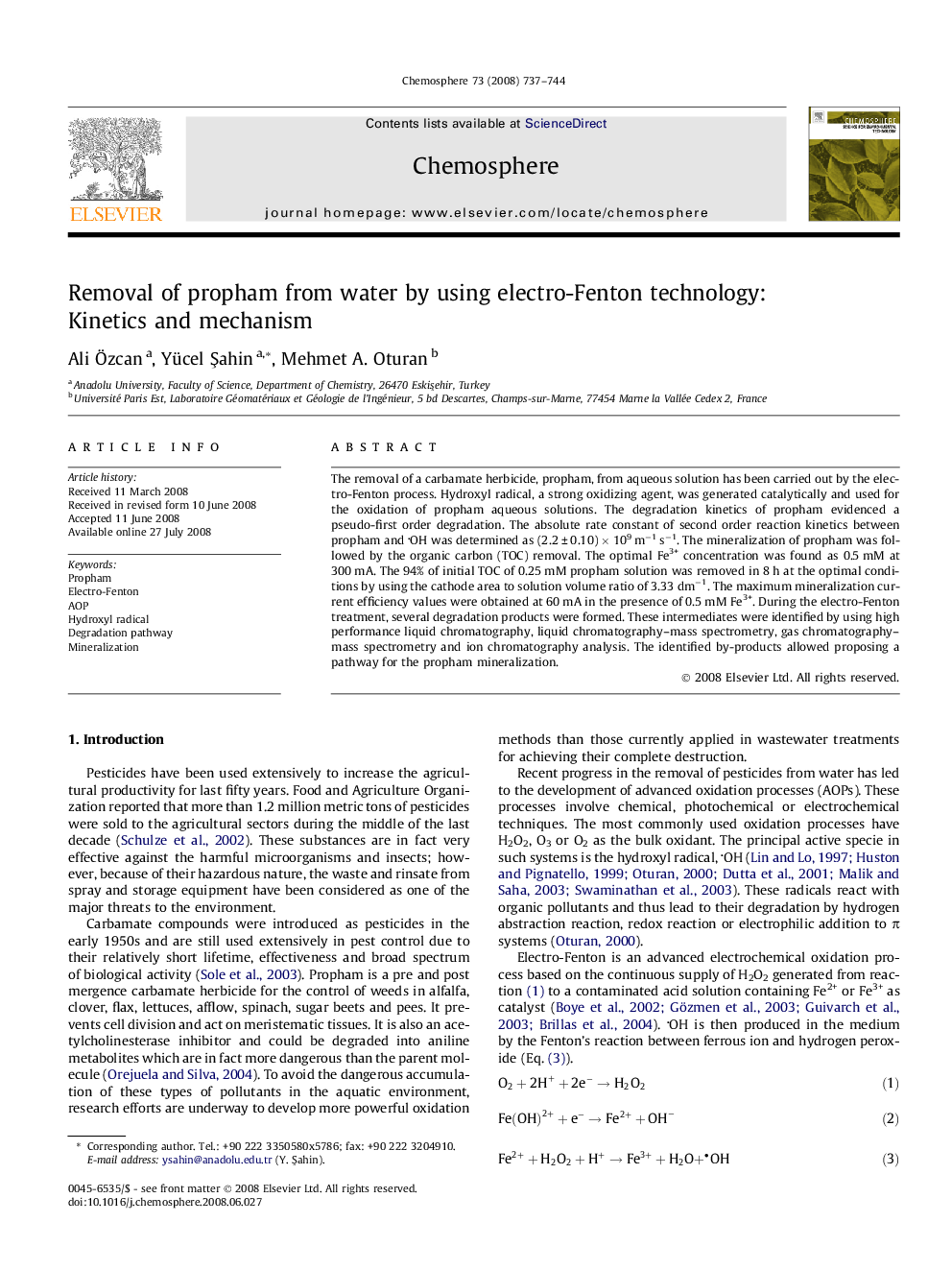| Article ID | Journal | Published Year | Pages | File Type |
|---|---|---|---|---|
| 4413539 | Chemosphere | 2008 | 8 Pages |
The removal of a carbamate herbicide, propham, from aqueous solution has been carried out by the electro-Fenton process. Hydroxyl radical, a strong oxidizing agent, was generated catalytically and used for the oxidation of propham aqueous solutions. The degradation kinetics of propham evidenced a pseudo-first order degradation. The absolute rate constant of second order reaction kinetics between propham and OH was determined as (2.2 ± 0.10) × 109 m−1 s−1. The mineralization of propham was followed by the organic carbon (TOC) removal. The optimal Fe3+ concentration was found as 0.5 mM at 300 mA. The 94% of initial TOC of 0.25 mM propham solution was removed in 8 h at the optimal conditions by using the cathode area to solution volume ratio of 3.33 dm−1. The maximum mineralization current efficiency values were obtained at 60 mA in the presence of 0.5 mM Fe3+. During the electro-Fenton treatment, several degradation products were formed. These intermediates were identified by using high performance liquid chromatography, liquid chromatography–mass spectrometry, gas chromatography–mass spectrometry and ion chromatography analysis. The identified by-products allowed proposing a pathway for the propham mineralization.
